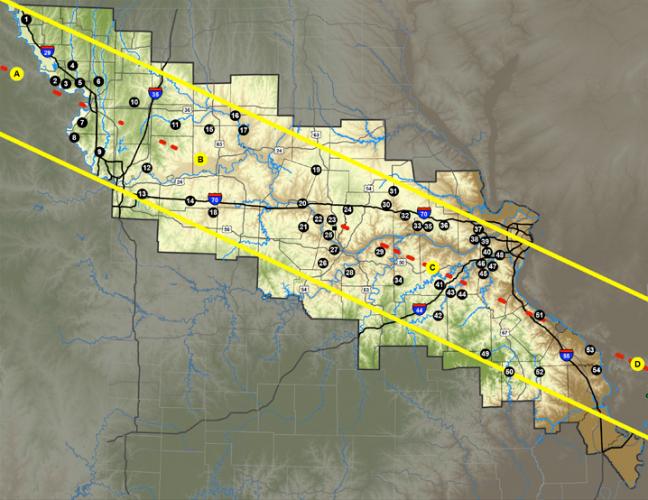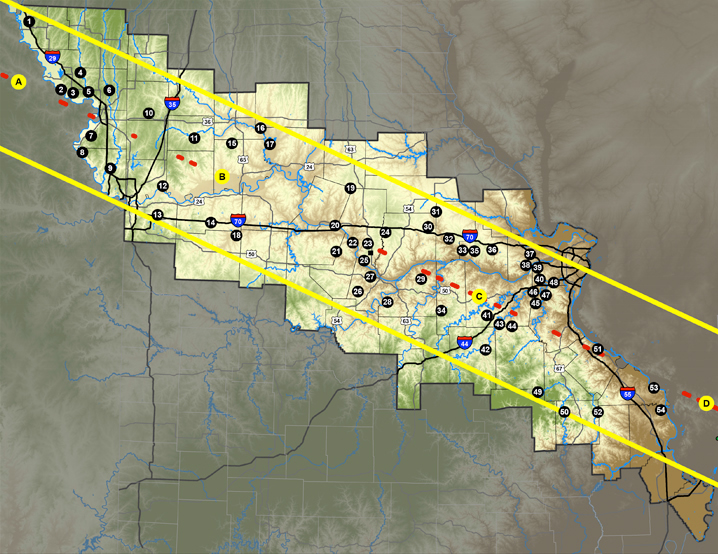
Xplor reconnects kids to nature and helps them find adventure in their own backyard. Free to residents of Missouri.


































Stay in Touch with MDC news, newsletters, events, and manage your subscription

Xplor reconnects kids to nature and helps them find adventure in their own backyard. Free to residents of Missouri.

A monthly publication about conservation in Missouri. Started in 1938, the printed magazine is free to residents of Missouri.


JEFFERSON CITY, Mo. -- Discover some unique activities in nature during the upcoming total solar eclipse on Aug. 21 by watching the rare event at one of 54 Missouri Department of Conservation (MDC) areas that lie in the solar eclipse’s primary path across Missouri.
During the eclipse, visitors at these conservation areas can enjoy regular outdoor activities -- such as fishing, hiking, and wildlife watching – in a far-from-regular way for a few minutes when the moon passes in front of the sun. The eclipse will also bring a rare chance for those watching wildlife to catch out-of-the-ordinary behaviors.
“Daylight is a cue for birds throughout their day to wake up in the morning and return to roost at night,” said MDC State Ornithologist Sarah Kendrick. “As the sky becomes darker during the eclipse, some birds may become confused by the lack of light and could exhibit odd behaviors such as going quiet, thinking that night is falling.”
Many of the featured MDC areas also offer an escape from crowded cities and light pollution, and all of the recommended areas have restrooms for visitor convenience.
While all areas are free to access and open to the public, some may require visitors to obtain a special-use permit for group camping.
Don’t forget to bring solar-eclipse-approved glasses for viewing the event!
For many Missourians, this total solar eclipse will be a once-in-a-lifetime event. The last total eclipse visible in the Show-Me State occurred in 1869. The next total solar eclipse will only be visible in parts of southern Missouri and will occur in April 2024.
According to NASA, during a total eclipse, the moon passes between the sun and the earth, blocking its light and allowing viewers to see the sun’s outer atmosphere, the corona. The moon casts a shadow, called an umbra, onto the earth. Communities in the path of totality will experience a few minutes of temperature drop and dimmed sunlight similar to twilight as the umbra passes over them.
Communities will experience totality at different times as the moon moves across the sky, but the first Missourians to see it will be those in St. Joseph around 1:04 p.m. The umbra will then cross central Missouri before totality occurs near Cape Girardeau around 1:20 p.m.
For an interactive map of the eclipse’s path across Missouri, approximate times to watch, a full list of recommended conservation areas for viewing, and details on each area, visit the MDC website at mdc.mo.gov/eclipse. A printable map is also available at the bottom of the webpage.